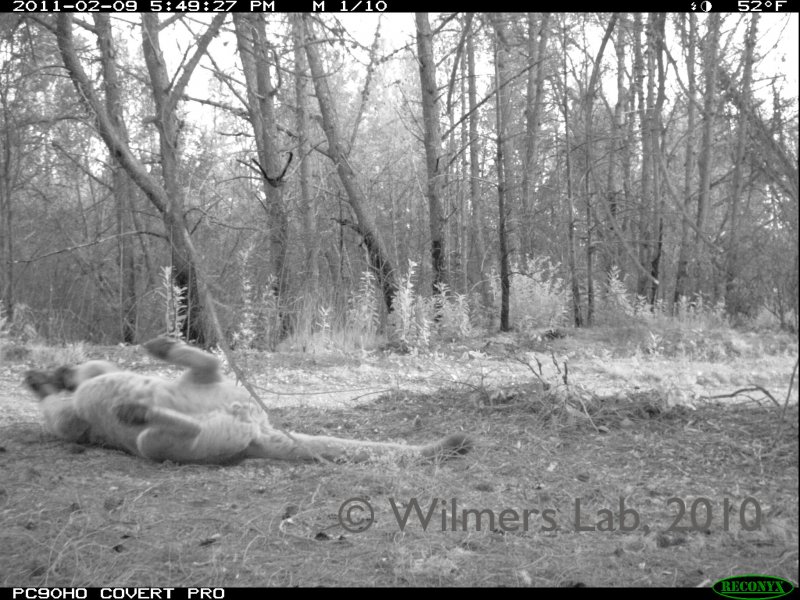I received a message from a friend a couple of days ago with curious news: a friend of his had found a puma skeleton and tracking collar near Wilder Ranch State Park, and did I want the collar? “Yes, of course” I replied, suspecting that the remains must be those of puma 3M, the only puma in that area whose whereabouts I did not know.
3M became somewhat of a legend to those working on the puma study. We first caught him on my first day work as the project’s primary field biologist – October 15, 2008 – in a place called “Deadman’s Gulch”. Because of a fluke of the terrain where he’d been treed by the hounds, it took us 5 hours to reach them, but when we did he was so relaxed he’d fallen asleep in the tree while the hounds barked and bayed right below him.
3M was a cool character. He was the first male puma collared in these mountains and he taught us a lot. His territory was approximately 100 mi2, from the edge of Santa Cruz to almost Año Nuevo State Park. His regularity at his marking sites has led to whole inquiries about the role of these sites in the life history of pumas and their breeding behavior in the wild. 3M showed us corridors that wove through neighborhoods. He was the only puma to regularly eat pigs, and he must have been supremely confident in his ability to take down prey because he sometimes ate only half of them before moving on.
In the first year of our project, we solicited several collar manufacturers for collars we could test in order to identify which brands worked best in the steep terrain and thick redwood gulches of the Santa Cruz Mountains. Unfortunately, the collar we placed on 3M developed a water-leakage problem that caused it to stop working. That untimely collar failure also caused me to devise various ways to recapture him, none of which ever worked. There were 3 times when I checked dead deer for signs of feeding by lions at 7am, only to have 3M arrive minutes later, eat them, and leave before I returned the next morning to look again. There was the day he walked right toward the trapline I’d set for him and, just feet away from it, smelled the fresh scat of a female lion that I’d placed there to pique his interest – only to have him veer off the trail (and away from my traps) in search of that female. Twice 3M started visiting new places but as soon as I caught onto his new routine, it seemed that he stopped going there. And so it went for so long that a former coworker on this project dubbed him “Chuck Norris” because it sometimes seemed that while we could never find him, he knew where we were… and stayed away.
There were many times I proclaimed to other team members that 3M had to be dead because he wasn’t being photographed at his accustomed marking sites and we weren’t finding fresh marks along remote trails or tracks on dusty logging roads – all indications you are in the home of a resident male lion. However, if a female lion visited one of those marking sites near 3M’s territory, he would suddenly return there – often alongside the female. The last of the sporadic sightings came from a trail camera in September 2011. And, in May 2012 we collared a new adult male lion (36M) whose collar data showed he occupied all of 3M’s known territory. Male lions are more or less intolerant of other males in their territory, so the thought that another male lion could occupy all of 3M’s home seemed to confirm that this time he had really died. And, with the collar now in-hand, it’s official.
The man that found the skeleton brought me to 3M’s final resting site yesterday so I could glean whatever insights were available – cause of death (any broken bones?), season of death (had leaves fallen over the bones?), and a precise location for our maps and analyses. The 45 minute hike to the site felt like a pilgrimage to pay respects to one of my teachers because, perhaps more than any other part of this project, the unfulfilled quest to recapture 3M taught me about patience, ingenuity, perseverance, versatility, and humility. His skeleton lay by a stream under a bay tree, intact and undisturbed by scavengers with no evidence he’d come to harm before his death (I can’t rule out disease, but there were no broken bones). R.I.P, 3M.

